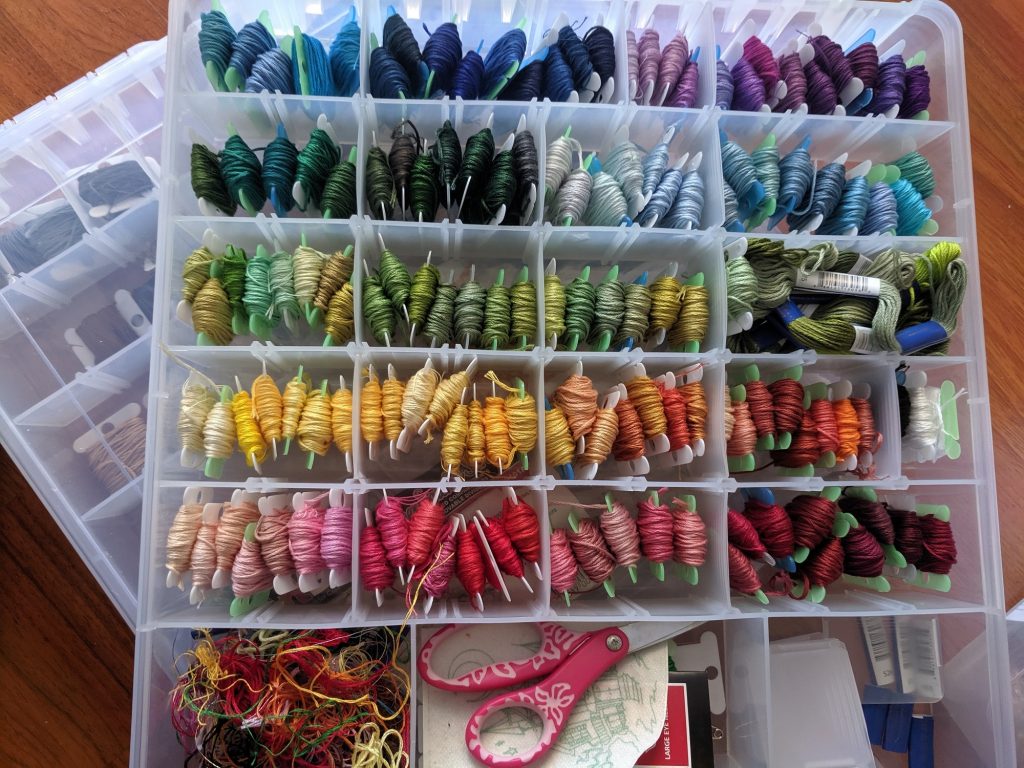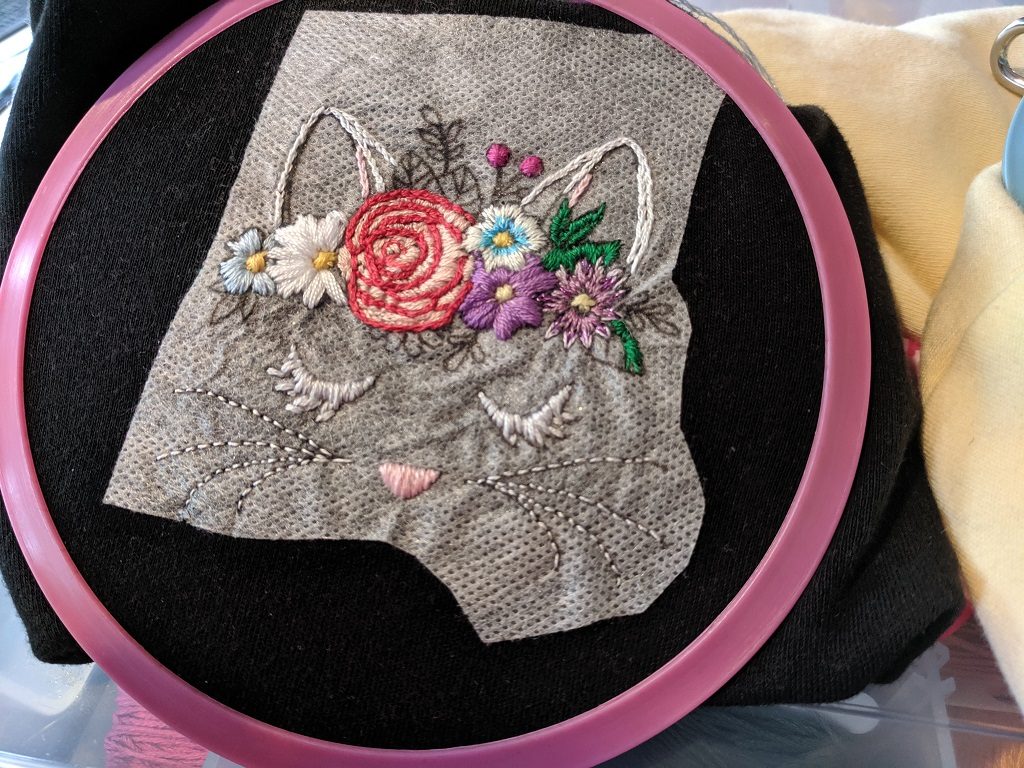As a campaign/marketing stunt, the Trump campaign’s plastic straws are brilliant. It is a solid component of the “troll the liberals” campaign plank. Garnered a lot of attention (not *good* attention, but that seemingly doesn’t matter). Sure, major news outlet aren’t exactly saying “go shop the Trump reelection store!!!”, but media outlets are still providing free advertising for Trump.
Author: Lisa
Recreating Grub Bootloader After the Windows Install Wipes It
Setting up the dual-boot Windows/Fedora system was straight-forward on my laptop. I installed Windows, then installed Linux and grub mkconfig found Windows and included it in the menu. Scott already had Fedora, and we needed to repair his Windows installation. Which, of course, blew away grub. Easy enough to get back, provided you’ve got a Live USB installation from which to boot.
Boot the Live media and use fdisk to find the Linux partition (in our installations, /boot is contained within the root partition).
[root@fedora02 ~]# fdisk -l
Disk /dev/sda: 10 GiB, 10737418240 bytes, 20971520 sectors
Units: sectors of 1 * 512 = 512 bytes
Sector size (logical/physical): 512 bytes / 4096 bytes
I/O size (minimum/optimal): 4096 bytes / 4096 bytes
Disklabel type: dos
Disk identifier: 0xd847fbc2
Device Boot Start End Sectors Size Id Type
/dev/sda1 * 2048 1026047 1024000 500M 83 Linux
/dev/sda2 1026048 20971519 19945472 9.5G 8e Linux LVM
Mount that partition somewhere:
mkdir /mnt/mycomputer
mount /dev/sda2 /mnt/mycomputer
Add bind mounts so /dev and /proc are in there
mount –bind /dev /mnt/mycomputer/dev
mount –bind /proc /mnt/mycomputer/proc
Chroot yourself into the mount point
chroot /mnt/mycomputer
Now you can reinstall grub. You don’t want the partition (e.g. /dev/sda2) but the disk. The following commands install the grub2 bootloader and reboot.
grub2-install /dev/sda
reboot
If you forget to pay attention on boot and thus inadvertently end up in the default operating system (<G>), edit /etc/default/grub and increase “GRUB_TIMEOUT=5”. Build the grub config — this should identify your Windows partition and include it in the menu
grub2-mkconfig -o /boot/grub2/grub.cfg
Reboot again, and you’ll be able to select between Windows and Linux.
Using grub rescue to boot machine and repair MBR
Using grub rescue to boot machine and repair MBR
Use “ls” to find your partition list:
ls
(hd0) (hd0,msdos3) (hd0,msdos2) (hd0,msdos1)
Check the content of each to find your Linux partition:
ls (hd0,msdos3)/
ls (hd0,msdos2)/
ls (hd0,msdos1)/
You want the one with the /boot folder. In our case, this is (hd0,msdos3). The following commands will boot your Linux OS.
set prefix=(hd0,msdos3)/boot/grub2
set root=(hd0,msdos3)
insmod normal
normal
<root password for maintenance>
Use “df” or “mount” to figure out which disk holds the Linux partition. In our case, it is /dev/sdb. You don’t want the partition (e.g. /dev/sdb2) but the disk. The following commands install the grub2 bootloader and build a config file.
grub2-install /dev/sdb
grub2-mkconfig -o /boot/grub2/grub.cfg
Disabling Windows Automatic Recovery
For times when automatic recovery is the problem (recovery loop), you can disable it:
bcdedit /set {default} recoveryenabled No
Embroidery Thread Storage
Two years ago, I picked up a bunch of ArtBin 9101AB boxes for 9$ each in a pre-Christmas sale. They stack nicely, and I use them to store zippers, fold over elastic, sewing feet, beads … all sorts of craft supplies. I’m trying to use them to store my embroidery thread. I have a lot — a whole rainbow of colors, plus another box with grays, browns, and ‘special’ thread (metallic, glow in the dark). But the little bobbin cards aren’t quite big enough. It’s still an improvement over random skeins of thread, and unused portions can be wrapped around the bobbin card to ensure you know exactly which light blue that bit is. Hopefully I’ll come up with something that keeps these things upright … other than stuffing the box so there’s nowhere for them to move 😀
Linux – Finding “Missing” Disk Space
You can have ‘stuff’ in a folder, mount a partition to that folder, and have disk space used for which you cannot account. Using a tool like df, you will see that 10GB of your 10GB disk is used, but using du the individual folders only account for 5GB.
Rather than randomly umounting partitions to see if there’s anything in the mount point folder, you can bind mount root to another location and check the disk utilization on the new mount.
[root@fedora123 ~]# mount -o bind / /mnt/fakeout/
[root@fedora123 ~]# du -sh `ls /mnt/fakeout | grep -v mnt`
0 bin
0 boot
280K ca
8.0K cacert.pem
4.0K careq.pem
0 certs
0 crl
0 dev
44M etc
52K home
0 index.txt
0 lib
0 lib64
0 media
0 newcerts
0 openhab
724K opt
4.0K private
0 proc
847M root
0 run
0 sbin
227M srv
0 sys
4.0K tmp
3.0G usr
4.0K var
[root@fedora123 ~]# umount fakeout
Vegetated medians
I thought the wildflower “gardens” in highway medians were a brilliant idea — aesthetically pleasing and low maintenance. Hadn’t even considered them as a food source for animals.
GPO Changes Not Reflected On Computer
A year or three ago, we had set up a group policy to display logon information in the Windows welcome screen — last logon time, information about any bad passwords since your last successful logon. It’s nice, but you are unable to log in if the information is unavailable. So we disabled the setting (just clearing a GPO setting doesn’t always remove the config from anywhere it’s already set … you’ve got to change to the desired setting). Aaaaand … one server still shows the logon info. Or, more accurately, fails to display it and prevents the domain account from logging on. Luckily it’s a member computer and we can just log in with local accounts.
I thought about just editing the local computer policy (which would have priority anyway) to disable the logon info, but the computer policy could not be opened. It threw a strange access denied error. I could edit the local user policy. Just not the computer policy.
It seems that the local computer policy got corrupted. After deleting registry.pol from c:\Windows\System32\GroupPolicy\Machine … I am able to modify the local computer security policy. GPO settings from the domain are also applied as expected. WooHoo! I can sign in using domain IDs again!
New Embroidery Project
I finally got larger blank t-shirts for Anya. Anya and I will spend an hour or two in the evening relaxing and embroidering the shirts. About nine shirt-sized images fit on a 8.5″x11″ sheet of dissolving, printable transfer paper. I’ll create a single image and arrange all of the embroidery patterns to fill the page (needs to be black lines on a white background as the printout is fuzzy, and color or gray-scale makes a big mess). Cut out one image, stick it onto a shirt, add a hoop (I love Darice’s spring tension hoops!), and go.
I taught Anya to back-stitching along lines last year, and I taught her how to make a satin stitch today. She’s working on a cute little owl. I’m working on this hand embroidery pattern from Urban Threads. Should be finished tomorrow too!
Sparse Checkout With Git
I’ve encountered a few repositories that are huge. Unwieldy huge, and stuffed with files that aren’t relevant to what I need. The straight-forward solution is to use multiple repositories — that’s what I do at work with my code samples. There’s a different repo for each language because the PHP developers really don’t care what the C# code looks like. The Java developers don’t need a copy of the Python code. But there are advantages to having a single repository that may preclude you from taking the simple solution. Git sub-modules are an interesting approach — combining multiple repositories into a single functional unit. But that’s a pretty big change to an existing repo. And, if you participate in open source projects, it may not be your decision anyway.
There’s another option for selectively cloning when you’re working with a large repo — an option that doesn’t require any changes to the repository. An end user can perform a sparse checkout — essentially use a filter like .gitignore to select or deselect certain files/folders from being pulled into the local working directory. The file is named sparse-checkout and is located in .git\info — unlike a .gitignore file which indicates what shouldn’t get included, sparse-checking controls what is included (if you want an entire repo except one folder, use !path/to/folder/**)
The sparse-checkout file used to get just the core components of Scott’s OpenHAB helper libraries plus the OpenWeatherMap community scripts is:
.github/** Core/** Community/OpenWeatherMap/**
To use sparse checkout, set the core.sparseCheckout config value to true. You can add sparse checkout to a repo you’ve already cloned and use
git read-tree -mu HEAD
to “clean up” unwanted files. Or you can set up sparse checkout before you clone the repo
D:\tmp>mkdir ljrtest D:\tmp>cd ljrtest D:\tmp\ljrtest>git init Initialized empty Git repository in D:/tmp/ljrtest/.git/ D:\tmp\ljrtest>git remote add origin https://github.com/openhab-scripters/openhab-helper-libraries D:\tmp\ljrtest>git config core.sparseCheckout true D:\tmp\ljrtest>copy ..\sparse-checkout .git\info\ 1 file(s) copied. D:\tmp\ljrtest>git pull origin master remote: Enumerating objects: 3591, done. remote: Total 3591 (delta 0), reused 0 (delta 0), pack-reused 3591R ), 7.00 MiB | 6.95 MiB/s Receiving objects: 100% (3591/3591), 9.26 MiB | 7.22 MiB/s, done. Resolving deltas: 100% (1786/1786), done. From https://github.com/openhab-scripters/openhab-helper-libraries * branch master -> FETCH_HEAD * [new branch] master -> origin/master D:\tmp\ljrtest>dir Volume in drive D is DATA Volume Serial Number is D8E9-3B61 Directory of D:\tmp\ljrtest 07/03/2019 09:07 AM <DIR> . 07/03/2019 09:07 AM <DIR> .. 07/03/2019 09:07 AM <DIR> .github 07/03/2019 09:07 AM <DIR> Community 07/03/2019 09:07 AM <DIR> Core 0 File(s) 0 bytes 5 Dir(s) 386,515,042,304 bytes free D:\tmp\ljrtest>dir .\Community Volume in drive D is DATA Volume Serial Number is D8E9-3B61 Directory of D:\tmp\ljrtest\Community 07/03/2019 09:07 AM <DIR> . 07/03/2019 09:07 AM <DIR> .. 07/03/2019 09:07 AM <DIR> OpenWeatherMap 0 File(s) 0 bytes 3 Dir(s) 386,515,042,304 bytes free
Using sparse checkout, no one else has to do anything. Configure your client to get the files you want, and you’re set.

